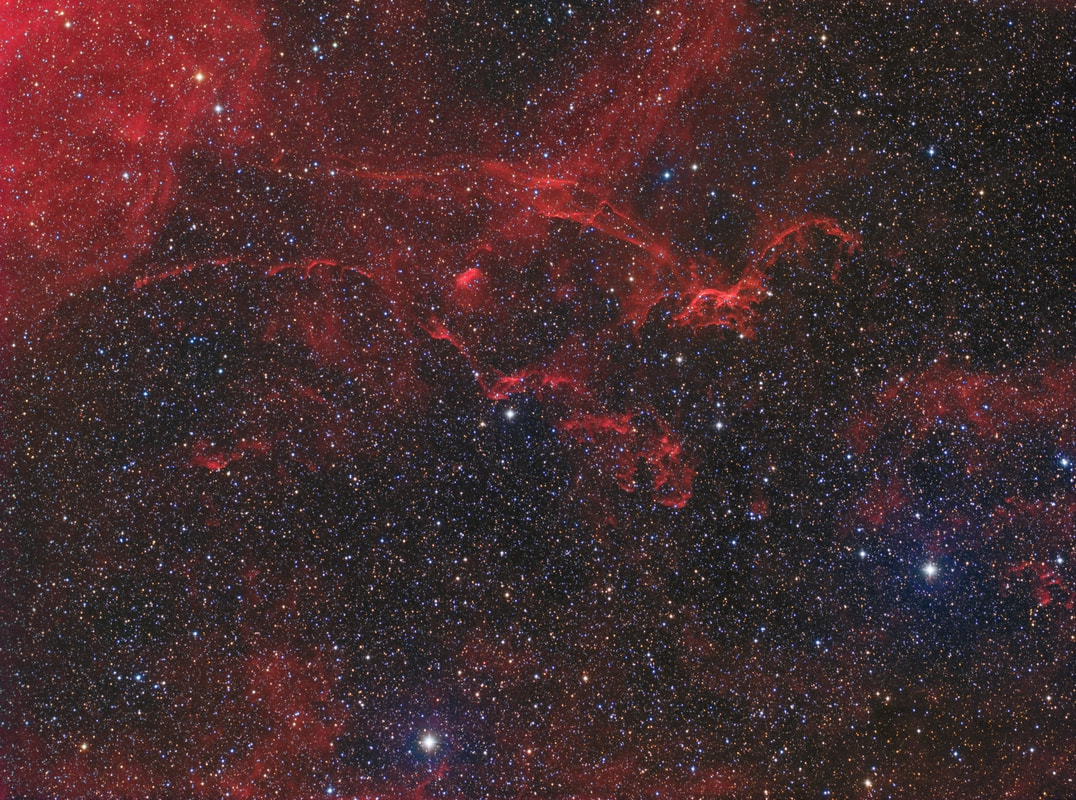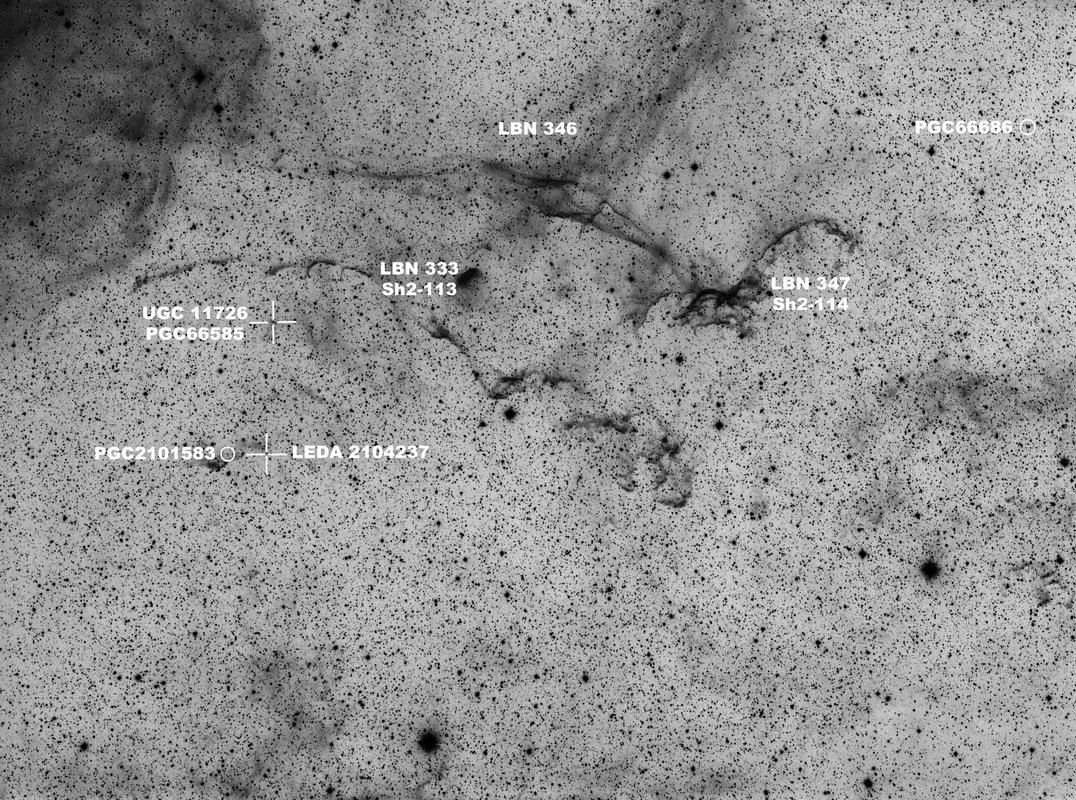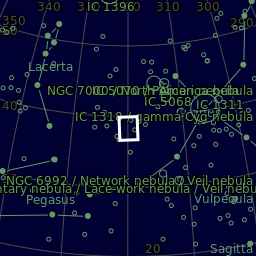Sh2-114 The Flying Dragon nebula
|
Details
M: EQ8 T: Takahashi FSQ85 0.73x reducer C: QSI683 and Moravian G2-8300 with Baader RGB and Astrodon 3nm Ha filters. 50x300s in Red, Green and Blue 60x1800s in Ha Totalling 42 hours and 30 minutes in exposure time. |
Sh2-114 (the Flying Dragon nebula) is a faint and rarely imaged nebula located in the constellation of Cygnus.
Sh2-114 is a cloud studied very little beyond its mere cataloging. It has a filamentous aspect, constituted by several overlapping arched strands. A semicircle shape with the concavity oriented towards the south and together with the nearby cloud Sh2-113, a bubble structure similar to a supernova remnant. However, no supernova remnants have ever been described in this region. Its complex, wispy structure is more likely the result of winds from hot, massive stars interacting with the magnetic fields in the interstellar medium. There is no calculated distance from us. There are other things catalogued in this area as shown in the mono annotated image. Sh2-114 is also known as LBN 347 but is embedded within the larger LBN 346 structure. There are a few faint galaxies also logged in the annotated image. |



